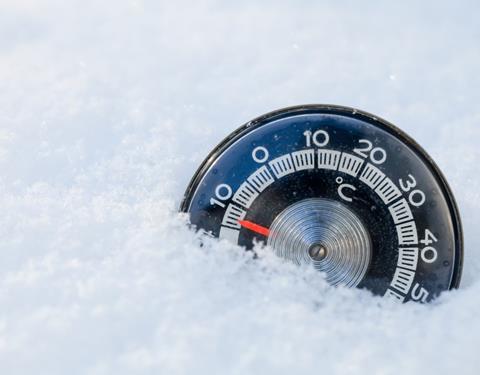For any industry, it is important to take necessary precautions to protect your hydraulic hose from extreme temperatures, such as those we experience in the winter months.

By taking preventative steps, you can limit the risk of detremental effects which can occur when hose is exposed to weather such as snow, ice, frost and high winds, potentially increase a hose’s lifespan and avoid maintenance costs due to things such sudden hose failure.
Despite many modern hoses being developed to withstand temperatures, the cold weather can still permanently alter the bending behaviour of your hydraulic hose and, when warmed up, can make your hose stiff, leathery and tough, especially when exposed to extreme cold for prolonged periods.
Most hydraulic hoses are rated for -40°C to 100°C. Some specialty hydraulic hoses can withstand -48°C) to 149°C depending on the number of spiral or braided wires, and type of elastomeric material.
Viscosity is a vital consideration when preparing your hydraulic systems for the winter months. Choosing the fluid with the appropriate viscosity for the application can help to protect equipment from friction, abrasion and adhesive wear rise. The incorrect viscosity can have the opposite effect. For example, high oil viscosity can lead to starved pumps, cavitation and lack of lubrication.
Did you know lower temperatures cause hydraulic oil to increase to a higher viscosity? Therefore, we recommend checking the grade, pour point (and added depressants), as well as the viscosity index (VI) of any fluids you are using in your systems.
Select hydraulic oil with a low VI, and measure it when any changes in temperature occur. The higher the viscosity index, the higher the resistance to change in viscosity.
Check your VI requirements and fluid levels within hydraulic equipment prior to starting. If any fluid is too thick to drip off the end of a dipstick, it is too viscous to function properly, especially in the cold. It is also wise to check fluid levels before each use, and refill after each use.
Commercial hydraulic hose can be protected from colder temperatures, to a degree, by using a protective wrap or sleeve. This helps to keep ice and snow away from your hose and its components. If possible, store your hydraulic hoses indoors in a clean and dry area, and run your hydraulic system prior to operating any attachments to give it time to warm up beforehand.
Lastly, carrying out regular visual inspections of your hoses and hydraulic cylinder rods for cracks and rust is critical, espiecially during the winter months. If you notice any damage, do not use the system and source emergency repair services or new commercial hoses and accessories to prevent injuries or further damage to the hydraulic system.
For more information on hydraulic hose or fittings, contact our team.














